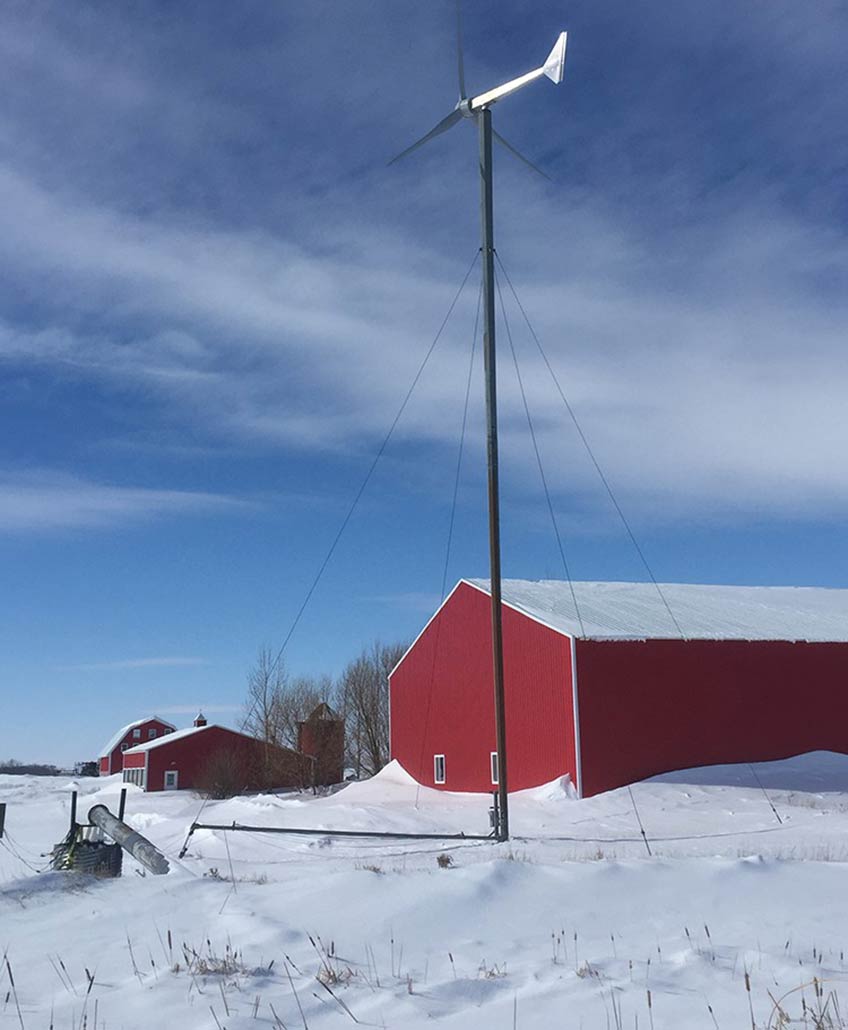NREL Wind Experts Lead Global Efforts
Global Wind Day, which will be celebrated worldwide on June 15, offers an opportunity to highlight the National Renewable Energy Laboratory's (NREL’s) leadership in international wind energy research.

The answer is blowing in the wind: NREL researchers are working to bolster distributed wind worldwide. Photo by Bill Schwankl, Alternative Energy Services.
- Task 26: Cost of Wind Energy
Led by Eric Lantz, Task 26 researches and disseminates information on the cost of wind energy. By surveying and standardizing methods for determining the value of wind energy and assessing methodologies for projecting future wind technology costs, Task 26 helps the global wind industry understand past and present trends and anticipate future trends.
- Task 28: Social Science of Wind Energy Acceptance
Suzanne Tegen co-leads Task 28, which focuses on expanding the understanding and coordinating research around the social science of wind energy—which continues to be a key constraint on the development of wind energy projects worldwide.
- Task 30: Offshore Code Comparison Collaboration, Continuation, with Correlation, and
unCertainty (OC6)
Amy Robertson leads Task 30, which validates offshore wind modeling tools by comparing model simulations to physical response data from floating and fixed-bottom offshore wind turbines, including both scaled water tank and full-scale, open-ocean systems.
- Task 31: Wakebench: Benchmarking Wind Farm Flow Models
The objective of Task 31, co-led by Pat Moriarty, is to develop an internationally accepted aerodynamic flow model for wind farms and an associated evaluation framework. By sharing data, knowledge, and best practices, Task 31 quantifies accuracy levels of state-of-the-art models that are used by wind resource assessment methodologies and wind farm design tools.
- Task 34: Working Together to Resolve Environmental Effects of Wind Energy (WREN)
Led by Cris Hein, Task 34 is the leading international forum for supporting deployment of wind energy technology worldwide by fostering a better understanding of environmental issues and developing efficient monitoring programs and effective mitigation strategies. With the support of the U.S. Department of Energy, WREN also maintains the internationally recognized TETHYS portal, which includes an extensive catalog of research on the environmental effects of wind and marine renewable energy.
- Task 37: Wind Energy Systems Engineering
The purpose of Task 37, co-led by Garrett Barter, is to coordinate international research activities to analyze wind power plants as holistic systems. The task provides framework guidelines that enable more seamless integration of analysis tools and reference models between organizations and different parts of a wind farm, from the wind resource to the electrons that flow into the grid. Recently, Task 37 released a 15-megawatt reference wind turbine that features options for both fixed-bottom turbines and those with floating offshore substructures.
- Task 41: Enabling Wind to Contribute to a Distributed Energy Future
Ian Baring-Gould co-leads Task 41, which coordinates international research and outreach on distributed wind turbine technology, typically small or large wind turbines that are not installed as part of larger offshore or land-based wind farms. Task 37 works to expand international collaboration on research to improve small wind turbine reliability, increase the cost-effectiveness of distributed wind technologies, and support research into the integration of wind into distributed energy networks—a key issue as nations and utilities embrace more distributed energy-focused power systems.
- Task 43: Digitalization of Wind Energy
Jason Fields heads up Task 43, a new effort that coordinates research and development activities focused on data and big-data analytics across the global wind industry. This effort will also work to develop recommended best practices for the wind energy sector around data and digitalization, key development areas for the power sector more generally.
NREL is leading IEA Wind to explore new strategic research areas in wind farm flow control, wind blade recycling, floating offshore wind arrays, and hybrid energy systems.
Founded in 1977, IEA Wind convenes worldwide wind energy experts to share information and conduct research activities designed to advance wind energy research, development, and deployment in member countries. IEA Wind also works to build international consensus on critical changes that will need to be overcome if wind is going to become a major supplier of global energy needs.
Last Updated May 28, 2025
